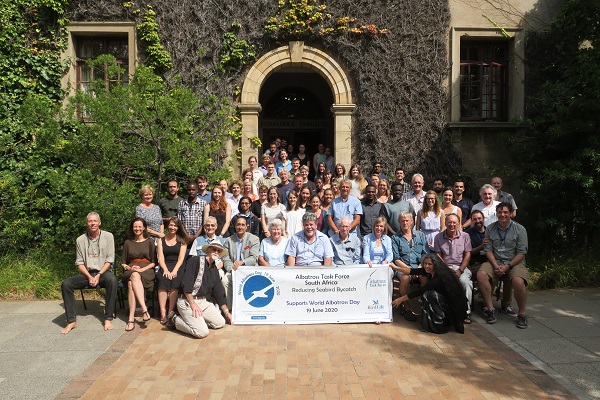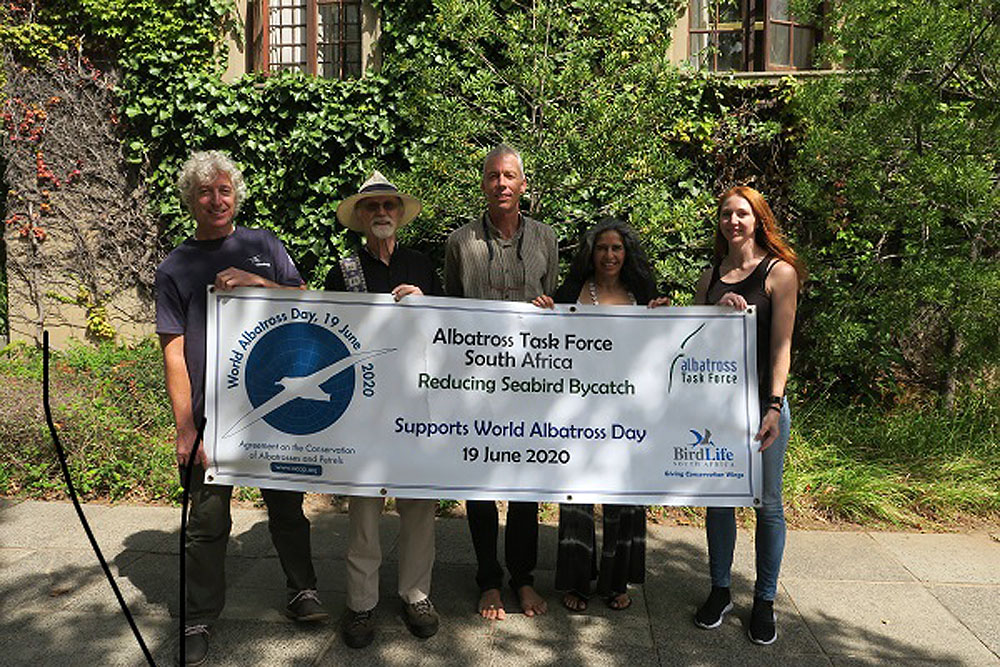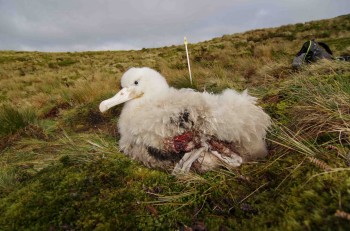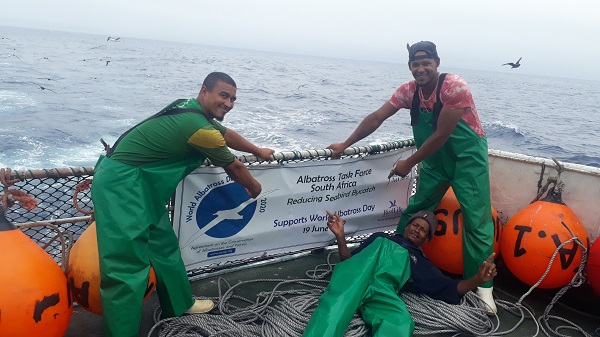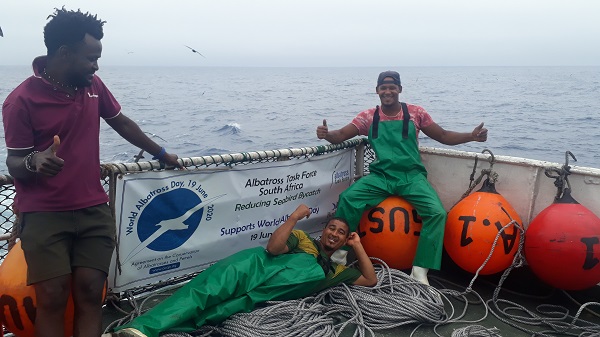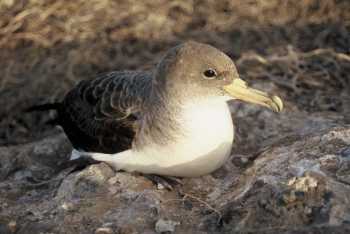
Results of mouse attacks on Laysan Albatrosses on Midway Atoll
The postponement of this year’s attempt to eradicate House Mice on Gough Island due to travel restrictions in relation to the COVID-19 pandemic was recently reported in ACAP Latest News (click here). Now comes the news that a similar operation also set to take place on Midway Atoll this year has been postponed – for much the same reason, but additionally due to concerns over ‘social distancing’.
The statement from the Pacific Region of the US Fish and Wildlife Service follows in full:
“Due to the rapidly evolving outbreak of respiratory disease caused by a novel (new) coronavirus (COVID-19), increasing travel restrictions, and following new guidance from the White House and Centers for Disease Control and Prevention (CDC) for reduced travel and social distancing, it has become necessary to postpone the implementation of the Seabird Protection Project. Right now we are working hard to ensure that the planning and preparation of the past three years is not lost, and we are coming up with a path forward to ensure that we are in the best possible place to complete this project in the future.
Although this was a difficult call to make, the safety and health of our staff and volunteers [have] to be paramount. We are closely monitoring the situation, keeping staff informed, and taking action as needed by following the most current guidance from the CDC, OPM, OEM and other health authorities.
In addition to the health concerns, the increasingly uncertain nature of travel restrictions occurring during some of the key early implementation stages of the project made it clear that moving forward now was simply not feasible.
Midway Atoll is one of the most important seabird colonies in the world, and we remain committed to ensuring that the birds who rely on Midway have a safe and rodent-free future. When we move forward with this project we have to do it the right way, and with the best possible chance at success.
We are incredibly grateful for the work that has been done already and remain more committed than ever to protecting Midway’s seabirds. Follow us here for continued updates as we move forward.”
The Gough and Midway eradication projects planned to take place this year – but now both postponed at least until 2021 – were together a large reason why this year’s inaugural World Albatross Day adopted the theme ‘Eradicating Island Pests’. Some irony here, but ACAP Latest News expects the two eradication efforts will eventually take place - and will continue to report on them as new information comes to hand.
John Cooper, ACAP Information Officer, 27 March 2020

 English
English  Français
Français  Español
Español 